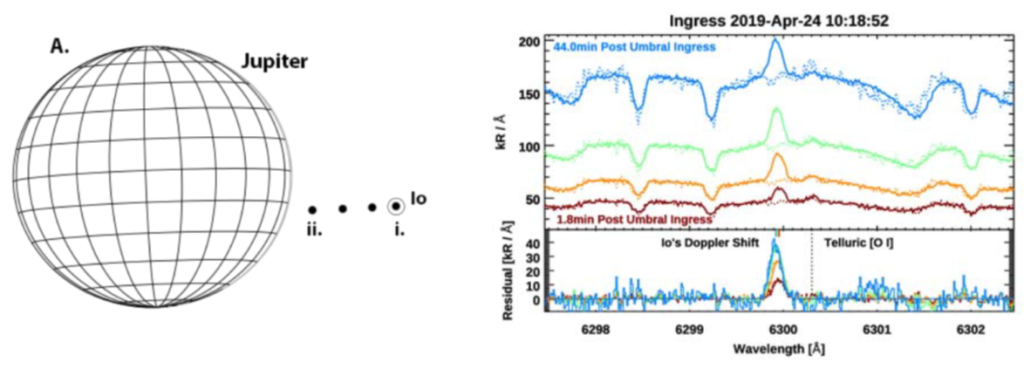Recent studies have established that the majority of Io’s molecular atmosphere, SO2 and SO, condenses during its passage through Jupiter’s shadow. The eclipse response of Io’s atomic atmosphere is less certain, having been characterized solely by ultraviolet aurorae. Here we explore the response of optical aurorae for the first time. We find oxygen to be indifferent to the changing illumination with [O I] brightness merely tracking the plasma density at Io’s position in the torus. In shadow, line ratios confirm sparse SO2 coverage relative to O since their collisions would otherwise quench the emission. Io’s sodium aurora mostly disappears in eclipse and e-folding timescales for decline and recovery differ sharply: ~10 minutes at ingress and nearly 2 hours at egress. Only ion chemistry can produce such a disparity; Io’s molecular ionosphere is much weaker at egress due to rapid recombination. Auroral emission is also evident from potassium, confirming K as the major source of far red emissions seen in situ. In all cases, direct electron impact on atomic gas is sufficient to explain the brightness without invoking significant dissociative excitation of molecules. The non-response of O and rapid depletion of Na during Io’s eclipse phase is surprisingly inverted from the eclipse phase behavior of the SO2 and NaCl parent molecules.

Read more: Schmidt et al. 2022, PSJ, in press (AAS Planetary Science Journal)
